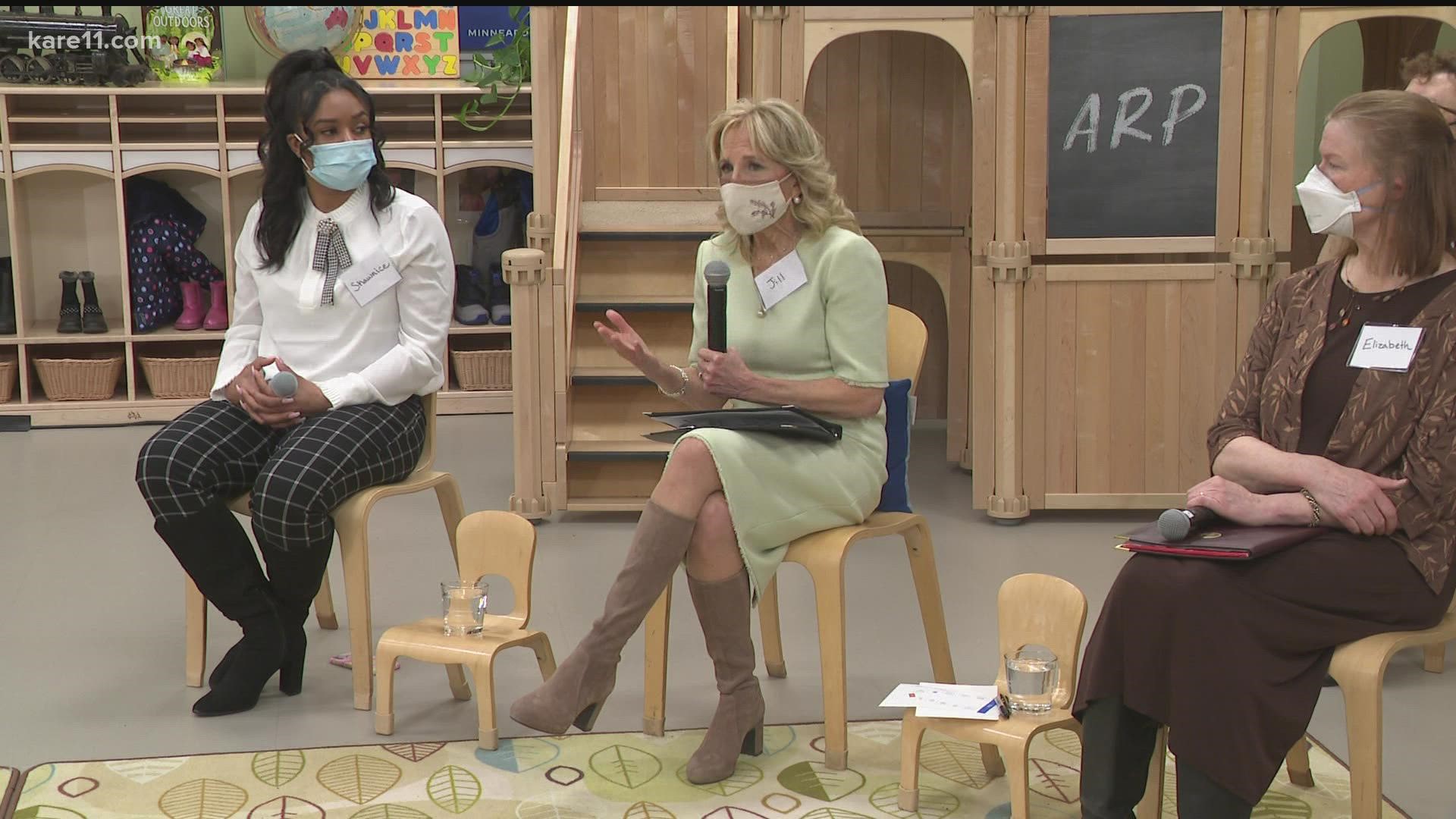MINNEAPOLIS — First Lady Jill Biden Wednesday thanked Gov. Tim Walz and his team for using federal COVID relief dollars to prop up childcare providers and early childhood education during the worst days of the pandemic.
Mrs. Biden and Human Services Secretary Xavier Becerra visited the University of Minnesota Child Development Laboratory School, which trains early education teachers and serves as a childcare center.
She touted the American Rescue Plan, which sent $550 million in childcare dollars to Minnesota. Roughly $300 million went to help providers stay afloat and provide wage support to their staffs. And $220 million went to the state's Child Care Assistance Program, which helps families afford daycare.
"The situation was dire and urgent, and that’s why Joe made a major investment in childcare through the American Rescue Plan," the First Lady told reporters.
"We supported high quality providers that enrich children’s lives and we helped make them more affordable."
Biden, who is a community college professor, also made a pitch for the Build Back Better bill during her appearance at the U of M. It's Democrats' human services infrastructure plan that is currently stalled on Capitol Hill because of concerns about the price tag.
"Reliable, affordable, quality childcare and universal preschool would profoundly change people's lives."
Biden and Becerra took part in a roundtable discussion about the challenges that providers and parents face battling through a childcare affordability crisis that was made worse during the COVID crunch.
Shawnice Walls, a single mother of two, was working and going to school when her children's daycare center closed in the pandemic.
"I was thinking about random care givers or babysitters. How was I even going to afford the rates for a random babysitter?" Walls recalled.
"Honestly it was just an instant panic. You don’t know if your kids are going to be infected with virus. You don’t know if they're going to get the educational development they need."
Walls said she doesn't have an extended family in the Twin Cities area, so she was relieved when her daycare center reopened.
The high cost of child care was already something Minnesotans struggled with even before the pandemic, which heightened the labor shortage. Childcare workers were typically not paid very well, according to industry experts who spoke at the event.
Elizabeth E. Davis, an applied economics professor at the University of Minnesota, explained that the cost of child care will always be high because it's a labor-intensive industry.
"Unlike other industries we can’t increase the machines or use robots — or we certainly don’t want to — and so it’s gonna be expensive to produce," Professor Davis remarked.
"And in this country, we rely on parents to pay most of the costs of childcare. When children reach school age and they go to kindergarten, then the taxpayers help cover those costs. But learning doesn't start at age five."
In Minnesota, the costs are more pronounced because of the safety standards in place, including one that says a staff member can't take care of more than four infants at the same time.
When the First Lady's plane landed at MSP International Airport, she spent time on the tarmac meeting with nurses and other healthcare workers from Abbott Northwestern Hospital. She also met with U.S. Deptartment of Defense medical workers who've been deployed to Minnesota to fill hospital staffing gaps during the surges of the delta and omicron variants.

